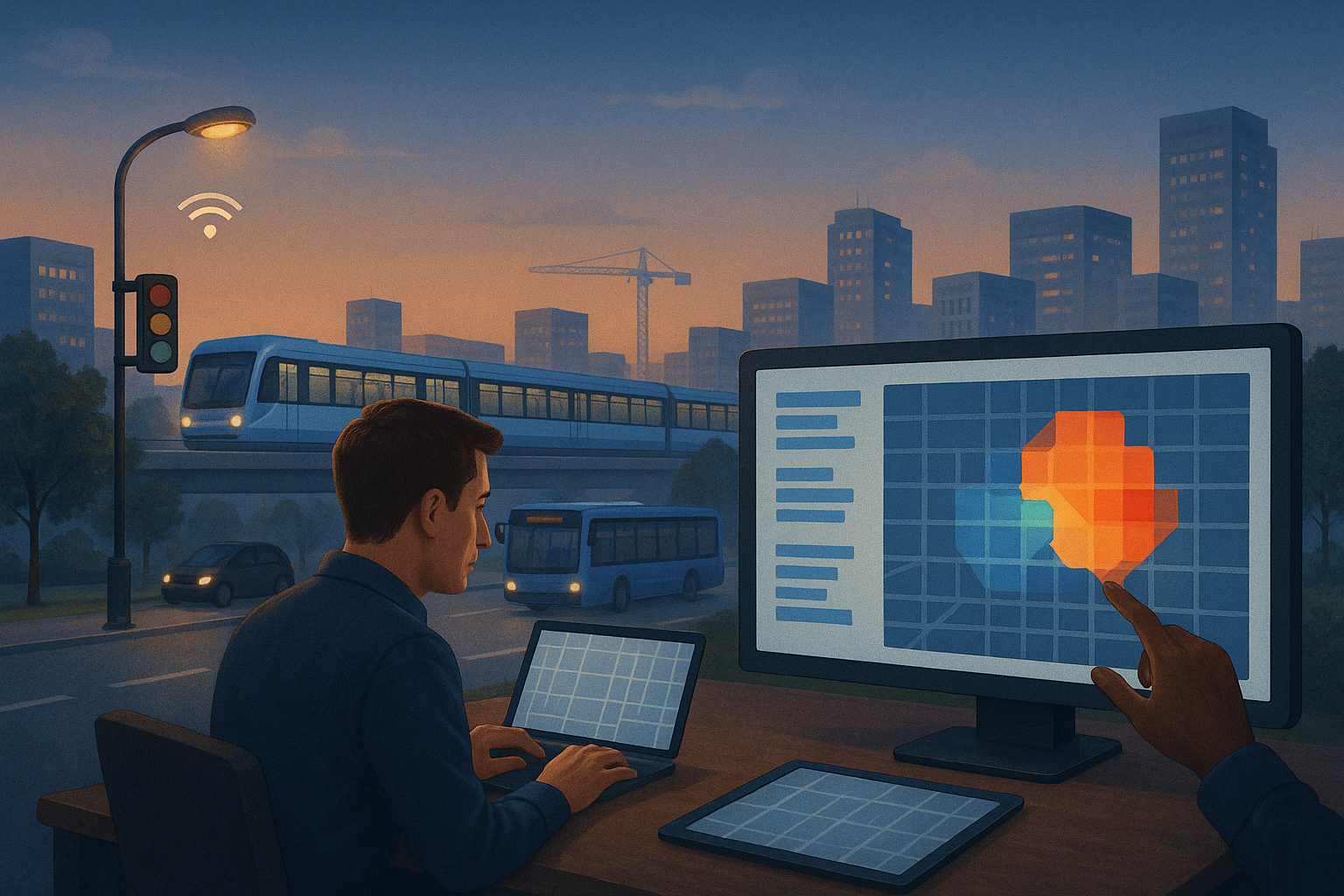How GIS Is Powering Smart Cities and Urban Planning?

Global governments are confronted with the burgeoning challenge of governing cities growing at historic rates. Urbanisation has escalated traffic congestion, real estate deficits, pressure on natural resources, and further burdens on civic infrastructure. Global governments are increasingly looking to newer technologies that offer superior understanding and actionable intelligence to address such challenges promptly. Among all such technologies, Geographic Information Systems (GIS) are perhaps the most capable weapon to plan smarter, safer, and more sustainable cities.
Exploring the Role of Geographic Information Systems in Government
A geographic information system extends beyond a traditional definition of a mere map; rather, it is an integrated system that captures, stores, and analyses information linked to specific geographic locations. Maps provide information about where things are located; GIS extends this by allowing patterns to be examined, forecasting what is to come later, and supplying information to inform policy decisions. For government agencies, that translates to shifting from reactive crisis intervention to an evidence-based proactive approach to decision-making. It enables agencies to forecast how cities will grow, disseminate resources efficiently, and design cities to meet current and anticipated needs.
GIS in Transportation and Mobility
Infrastructure is typically the most visible and urgent challenge of a city. Congested roads, overcrowded public transport, and increasing accident rates impact citizens' lifestyles as well as economic activity. GIS enables municipalities to track real-time traffic movements, locate accident hotspots, and create more efficient roadway and railroad systems. GIS enables transport planners to better time bus and subway services to coincide with actual population movements. Traffic lights in some of the smart cities adjust automatically depending on traffic density when GIS is combined with IoT sensors.
Urban Planning and Infrastructure Development
Proper urban planning needs accurate information on where citizens are residing, how citizens are migrating, and where future demand will most likely arise. GIS achieves this through combining demographic information, patterns of land use, and infrastructure mapping. They will have a chance to locate optimal new hospitals, housing estates, schools, and infrastructure. GIS provides real-time data-informed information as opposed to past methods of planning that were based on guesswork. This allows infrastructure to follow behind development and growth and expand evenly across societies.
Public Safety and Disaster Management
It is the responsibility of authorities to protect citizens and protect them from loss when a community is in distress. GIS is a resource in this field. It enables authorities to identify hotspots and mobilise law enforcement assets in a better manner. When natural disasters like floods, landslides, or earthquakes occur, GIS allows online situation awareness. Disaster relief teams can plan evacuations, locate shelters, and distribute relief in an efficient and timely manner. By employing GIS in disasters, authorities have the potential to save lives and dollars, reduce destruction, and enhance public trust in institutions.
Preservation of Environment and Protection of Resources
A city is not intelligent if it is not sustainable. Modern governments have to harmonise the development and protection of the environment, and GIS is central to this harmonisation. GIS allows governments to control waste disposal systems, keep green space clean, and monitor water and air quality. It helps to identify those areas that are most subject to degradation of the environment and assists in enforcing legislation. By incorporating environmental information in city planning, governments make sure that development is not done at the expense of natural resources.
Enhancing Citizen Services
Governments are increasingly evaluated by how well they provide services to citizens. GIS is the focal point of enhancing such services to make them efficient and transparent in character. GIS allows governments to keep assets such as pipelines, highway networks, and streetlights under observation so that maintenance can be made at a suitable time. GIS also helps address citizen grievances against particular geographic locales that facilitate rapid reaction and closing of gaps in services. GIS thereby complements responsibility while promoting people-centric governance.
Global Applications of GIS in Real-Life Scenarios
A few countries have already proven the promise of how GIS can transform urban administration. Singapore incorporates GIS to coordinate transport networks, housing distribution, and long-term master planning. Dubai incorporates GIS in its Smart Dubai strategy and implements it in transport systems, infrastructure, and utility networks. Across India, in most cities under the Smart Cities Mission, GIS is being used to plan metro rails, track floods, and make digital land records. These real-world applications are meant to show that GIS is now a must-do and no longer a to-do list item as part of existing governance.
The Future of GIS in Smart City Governance
GIS administration will be further reinforced with incoming breakthroughs in Artificial Intelligence, the Internet of Things, and 5G networks. Administrations will be able to create virtual twins of cities, simulate scenarios of cities' development, and predict problems even before they happen. This will bring about more accurate decisions, more efficient policies, and cities able to deal with human as well as natural problems. Integrating GIS with new technologies will enable governments to build inclusive, responsive, and sustainable cities.
Conclusion:
Geographic Information Systems are changing how cities plan, govern, and maintain themselves. They combine geospatial information and smart analysis to make cities smarter transport systems, safer systems of public protection, cleaner environments, and easier citizen services. GIS is increasingly the basis for making cities not just modern cities, but also robust cities and cities of the future.
At Arenasoftwares, our goal is to provide cutting-edge solutions to unlock the potential of GIS and related technologies. Our solutions aim to make difficult urban challenges easier to navigate, integrate smoothly into legacy infrastructure, and return smart results to citizens. From cutting-edge transport management to city planning, monitoring of safety, or information-based services delivery, Arenasoftwares is a toolkit to bring smarter cities to life.
The forthcoming era of urban habitation is characterised by intelligence, sustainability, and interconnectedness; in this context, Arenasoftwares is fortunate to serve as a preferred collaborator in realising this vision.
